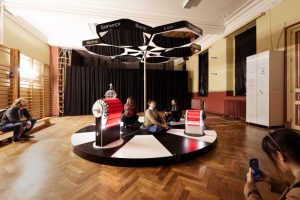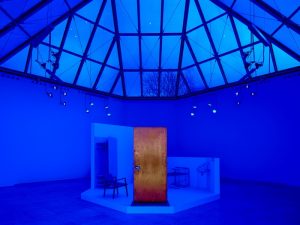Created in 1971, Intel’s 4004 was the world’s first commercial microprocessor. It wasn’t particularly powerful though. Its main function was originally to perform simple mathematical operations in a mundane business calculator. However, it wasn’t the 4004 itself that was important but its architecture.
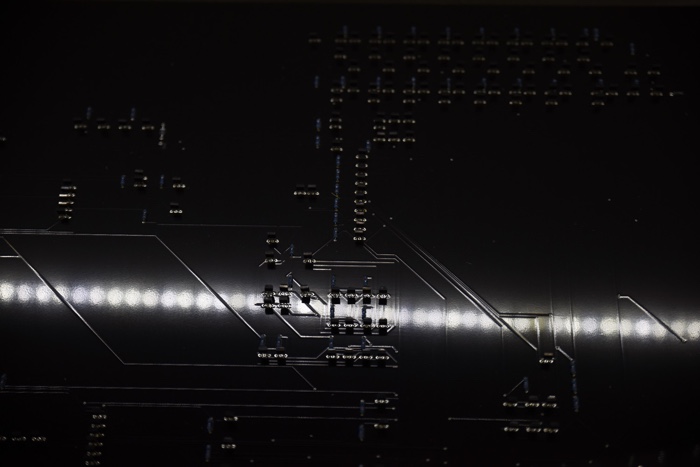
Quentin Destieu, À coeur ouvert, 2017. Photo: Luce Moreau. Installation view of the exhibition Master/Slave at Art-cade Galerie in Marseille, France
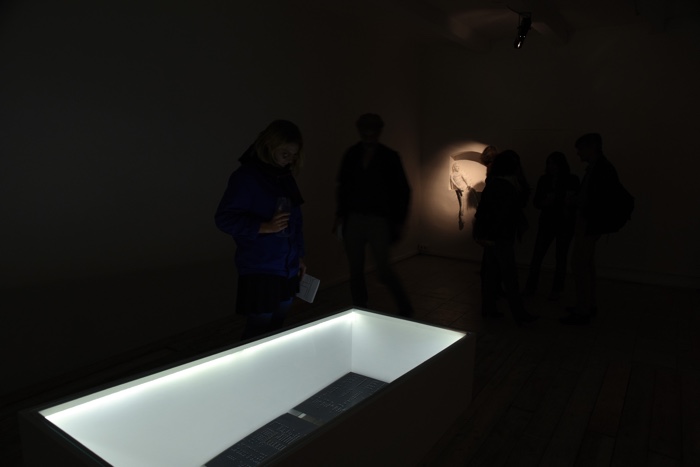
Quentin Destieu, À coeur ouvert, 2017. Photo: Luce Moreau. Installation view of the exhibition Master/Slave at Art-cade Galerie in Marseille, France
The 4004 offered a radical new way of thinking and building processors. General purpose computers used to be room-sized equipment but the miniaturization of the 4004 made it possible to commodify computing.
Another extraordinary thing about the 4004 is that it was the first and the last hand-drawn microprocessor. The production of its successors would be so complex that it would be automated, performed on a micro scale by hi-tech machines.
Nowadays it’s not just their technological complexity that leaves microprocessors outside of human understanding, their production itself is shrouded in secrecy, their architecture protected by patents. We’ve completely lost control over components that are at the core of every single connected object in our lives.
Artist Quentin Destieu hoped to reconquer that knowledge by re-creating and magnifying the inner architecture of the 4004 processor so that its size would lay bare its inner working. The objective of the project was also to create a technological support free of copyrights and working on an open source model. Which would have brought the technological understanding of electronics back into the commons (where it belongs.)
To achieve this de-miniutarization process, the artist first needed to go back to the initial drawings, recreate the plans and understand the circuits. With the help of engineers and artists (Bastien Vacherand, Sylvain Huguet, Guillaume Stagnaro, Grégoire Lauvin and many others) and using the plans made available by Intel in 2011, Destieu tried to recreate one by one the 2300 transistors of the 4004 processor. He quickly realized that much of the initial knowledge had been lost. Discussions on forum and with the engineers of the 4004 revealed that the know-how of the original plans was no longer fully mastered by a single person.
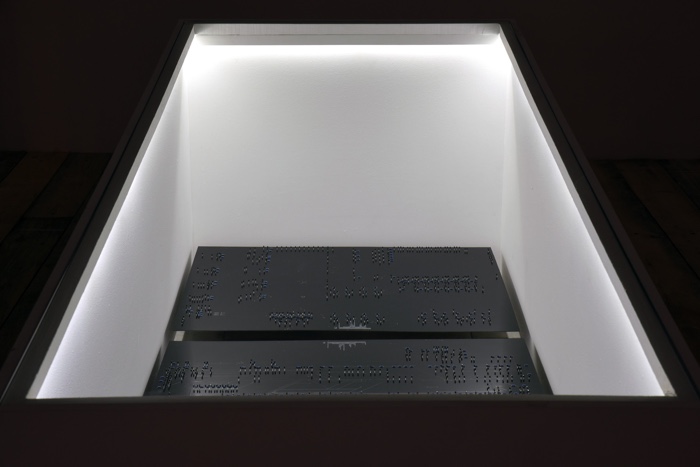
Quentin Destieu, À coeur ouvert, 2017. Photo: Luce Moreau. Installation view of the exhibition Master/Slave at Art-cade Galerie
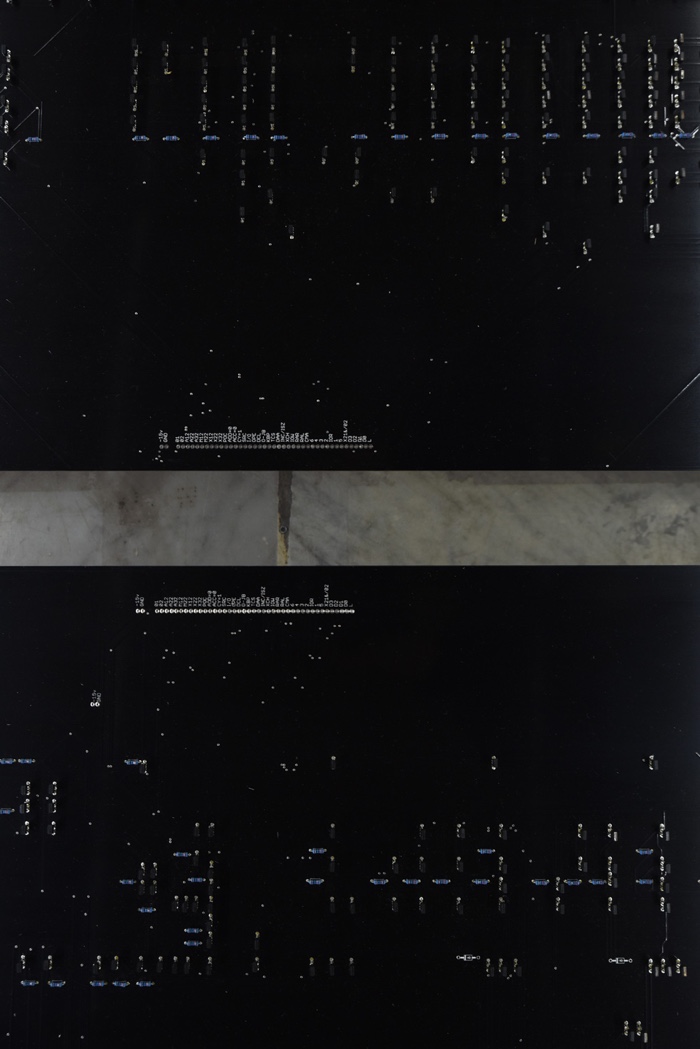
Quentin Destieu, À coeur ouvert, 2017. Photo: Luce Moreau. Installation view of the exhibition Master/Slave at Art-cade Galerie
As a result, the sculptural form of À coeur ouvert (“at open heart” because, like an open heart surgery, the project aims to reach the vital organs of the processor) was guided by this conclusion that planned obsolescence had reached not just consumer electronics but also human knowledge itself.
The installation is made of 3 circuits that measure in total 1,90m by 80cm, the scale of a human body. The black colour echoes the fact that mainstream technology is now running from inside a inscrutable black box. The circuits are enclosed inside a kind of mausoleum that acknowledges the demise of our control over information technology.
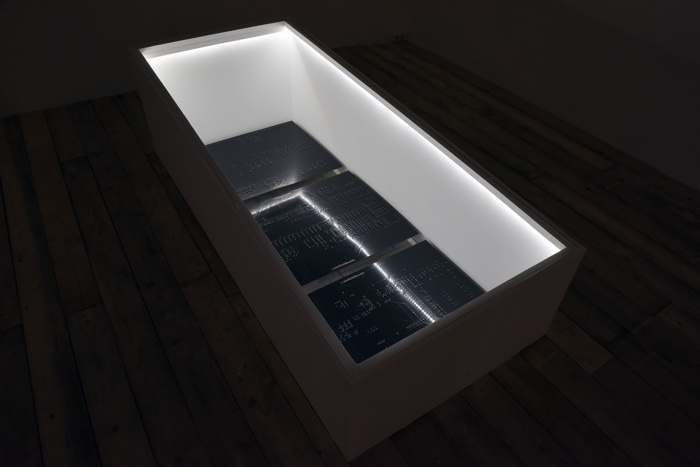
Quentin Destieu, À coeur ouvert, 2017. Photo: Luce Moreau. Installation view of the exhibition Master/Slave at Art-cade Galerie
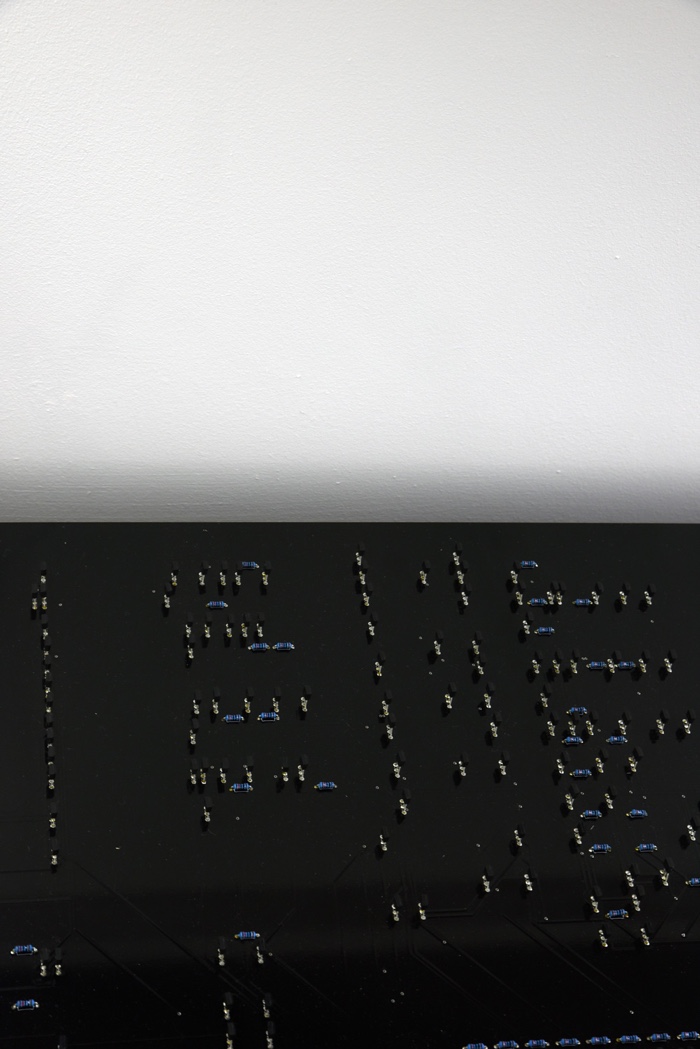
Quentin Destieu, À coeur ouvert, 2017. Photo: Luce Moreau. Installation view of the exhibition Master/Slave at Art-cade Galerie
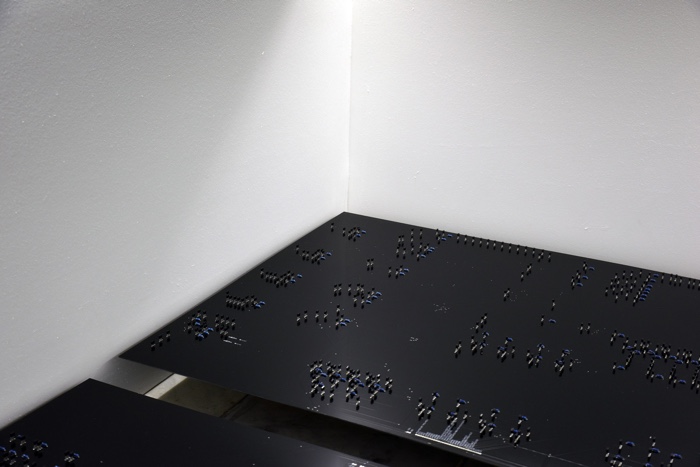
Quentin Destieu, À coeur ouvert, 2017. Photo: Luce Moreau. Installation view of the exhibition Master/Slave at Art-cade Galerie
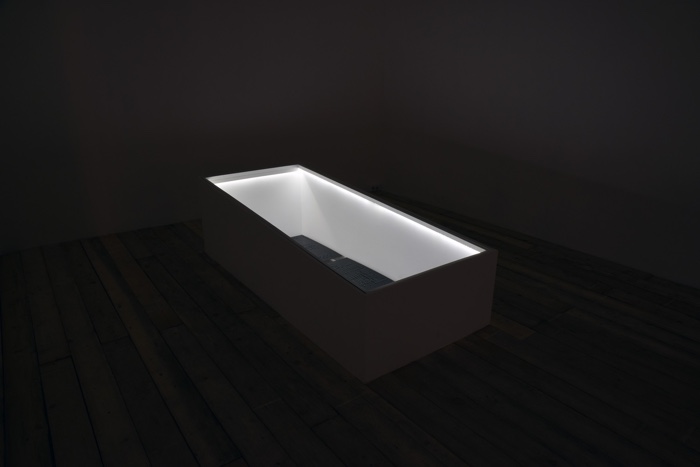
Quentin Destieu, À coeur ouvert, 2017. Photo: Luce Moreau. Installation view of the exhibition Master/Slave at Art-cade Galerie
If you’re curious about the work, do check out Master/Slave, Quentin Destieu solo show at Art-cade Galerie, Grands Bains Douches de la Plaine, in Marseille, until 15 December 2018.


